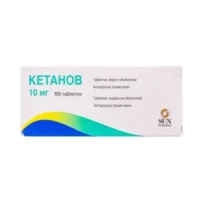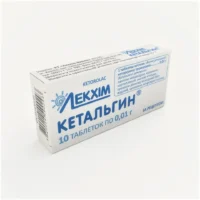Description
Nimesulid (Nimesulide) Tablets 0.1 g. №30
Ingredients
- Active ingredient: Nimesulide 0.1 g per tablet.
Dosage
- Dosage: The usual dose is 100 mg twice daily. Do not exceed the recommended dose.
Indications
- Indications: Nimesulide is indicated for the relief of pain and inflammation in conditions such as osteoarthritis, rheumatoid arthritis, and acute musculoskeletal disorders.
Contraindications
- Contraindications: Do not use in patients with a history of hypersensitivity to nimesulide or other NSAIDs. Avoid use in patients with active peptic ulcers or gastrointestinal bleeding.
Directions
- Directions: Take the tablets orally with water, preferably after meals to reduce the risk of gastrointestinal side effects.
Scientific Evidence
Nimesulide is a selective COX-2 inhibitor with anti-inflammatory, analgesic, and antipyretic properties. Studies have shown that nimesulide effectively reduces pain and inflammation in various conditions, with a lower risk of gastrointestinal side effects compared to traditional NSAIDs.
Additional Information
It is important to use nimesulide at the lowest effective dose for the shortest duration necessary to control symptoms. Long-term use may increase the risk of cardiovascular events and gastrointestinal complications.
Research has indicated that nimesulide may have a more favorable gastrointestinal safety profile compared to other NSAIDs, making it a preferred choice for patients at risk of gastrointestinal complications.



